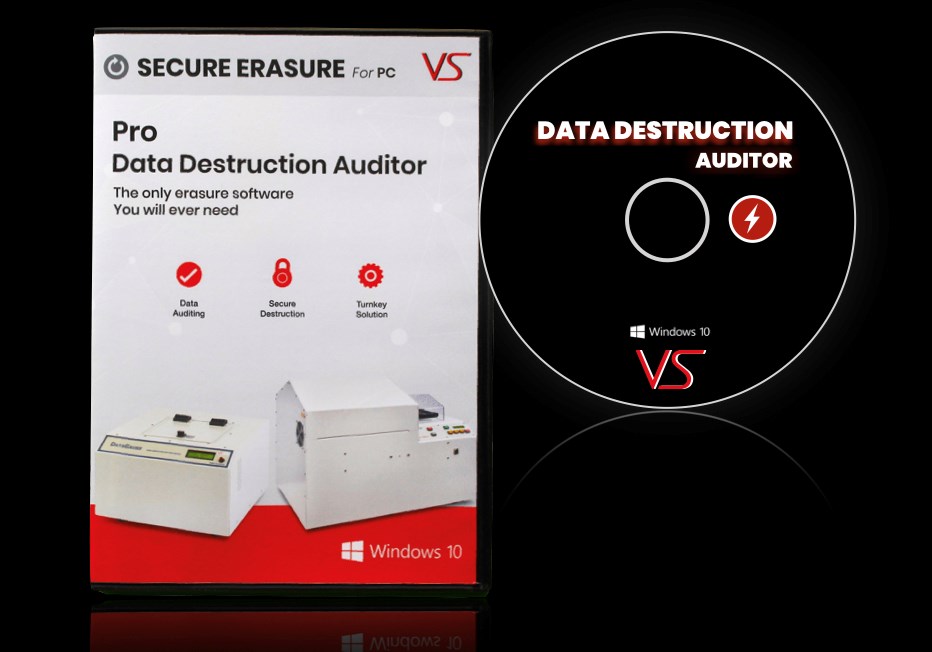Understanding the Function of Data Destruction in Conditioning Cyber Security Defenses
Wiki Article
The Necessary Nature of Information Destruction in Upholding Computer System Safety Solutions and Protecting Versus Unauthorized Gain Access To
In an age where information violations and identification burglary are progressively prevalent, the value of effective data devastation can not be overstated. Different approaches, from information wiping to physical damage, serve as important safeguards versus unauthorized access.Relevance of Information Destruction
In a significantly electronic globe, the significance of information devastation can not be overemphasized. As organizations amass large amounts of delicate info, the prospective repercussions of falling short to effectively dispose and handle of that data end up being significantly severe. Information violations, identity theft, and business reconnaissance pose considerable dangers, highlighting the necessity of effective data damage practices.
In addition, as modern technology develops, so too do the techniques through which malicious actors seek to exploit sensitive information. Organizations should continue to be positive and vigilant in their information devastation methods to protect versus these advancing threats. By prioritizing information devastation, companies not only secure their properties yet additionally foster trust among clients and stakeholders, showing a dedication to responsible information monitoring and security methods.
Methods of Effective Data Devastation
To guarantee the full and irreparable devastation of delicate information, organizations can utilize a range of efficient methods tailored to their details requirements. One of the most common approaches is information wiping, which involves making use of specialized software program to overwrite existing data numerous times, making healing virtually difficult. This is particularly helpful for solid-state drives and difficult drives, where typical removal methods are poor.An additional reliable approach is degaussing, which utilizes strong magnetic fields to interrupt the magnetic domain names on storage media, providing the information irretrievable. This method is specifically suited for magnetic storage space devices, such as tape drives and hard drives.
Physical destruction is also a practical option, entailing the shredding, crushing, or incineration of storage space gadgets. This method assurances that information can not be recovered, making it optimal for companies taking care of extremely delicate info.
Compliance With Data Security Regulations
Organizations must not only focus on effective information devastation techniques yet additionally make sure compliance with information protection guidelines that control just how sensitive details is taken care of and gotten rid of. Following these laws is essential for safeguarding individual data and preserving consumer count on. Laws such as the General Data Protection Guideline (GDPR) in the European Union and the Medical Insurance Portability and Responsibility Act (HIPAA) in the USA enforce strict guidelines on information monitoring, that include needs for the safe disposal of sensitive info.To attain conformity, companies need to execute extensive data devastation policies that line up with these lawful frameworks. This includes identifying information that calls for damage, establishing methods for protected methodsâEUR" such as shredding physical media or making use of software application that meets market standards for data wipingâEUR" and preserving comprehensive documents of damage activities. Routine audits must be performed to make sure adherence to these policies and to identify any possible locations for renovation.
Failure to abide by data protection guidelines can cause substantial legal implications, consisting of large fines and damages to a company's credibility. Incorporating conformity right into information devastation techniques is not just a lawful obligation but likewise an essential component of a durable details security technique.
Repercussions of Poor Information Handling
Poor information handling can lead to severe repercussions that prolong beyond instant operational problems. Organizations might deal with considerable financial losses because of data breaches, which often lead to expensive remediation efforts, lawful charges, and governing fines. These monetary effects can prevent and stress sources development, eventually influencing a company's bottom line.
Furthermore, poor information handling can significantly damage a company's online reputation. Consumers, partners, and stakeholders might lose count on an entity that stops working to safeguard delicate information, bring about reduced customer loyalty and possible loss of service opportunities. This erosion of count on can take years to reconstruct, if it can be recovered in all.
Furthermore, companies might encounter lawful implications developing from non-compliance with information protection Homepage guidelines. Such violations might cause penalties and investigations, compounding the monetary problem and further tarnishing the organization's image.
In the world of cybersecurity, inadequate data administration techniques can create susceptabilities that make systems a lot more susceptible to unauthorized access and cyberattacks. Ultimately, these consequences emphasize the essential relevance of applying robust information taking care of treatments to guard sensitive info and maintain organizational honesty.
Best Practices for Secure Information Disposal

 continue reading this
continue reading this First of all, data ought to be categorized according to its level of sensitivity. Sensitive info requires extra strenuous disposal methods, such as shredding physical documents and utilizing advanced software program for electronic information cleaning. Employing qualified data damage services ensures conformity with sector regulations and requirements.
Second of all, companies need to carry out an information disposal plan that mandates routine audits. This policy should outline the treatments for information retention and damage, ensuring that obsolete data is taken care of immediately and safely. Training employees on these protocols is vital to cultivating a society of security understanding.
Lastly, maintaining detailed records of disposed information boosts responsibility and provides a clear audit trail. This paperwork should consist of the sort of data damaged, the technique made use of, and the date of disposal.
Final Thought
Taking on durable techniques such as information cleaning, degaussing, and physical damage, together with conformity with policies like GDPR and HIPAA, is vital for securing delicate info. Disregarding correct data disposal practices can lead to extreme repercussions, consisting of data violations and lawful repercussions.In a period where data violations and identification theft are progressively widespread, the relevance of efficient data destruction can not be overemphasized. data destruction. Information violations, identity theft, and company reconnaissance posture substantial dangers, highlighting the necessity of efficient data devastation methods
Compliance with guidelines her explanation such as GDPR and HIPAA requireds that organizations apply strict data security procedures, consisting of the safe and secure destruction of information at the end of its lifecycle.
By focusing on information damage, firms not just shield their properties but likewise foster trust fund among stakeholders and customers, showing a dedication to accountable information administration and security methods.
Organizations need to not just concentrate on efficient data destruction methods yet also guarantee conformity with data security laws that govern exactly how sensitive details is managed and disposed of.
Report this wiki page